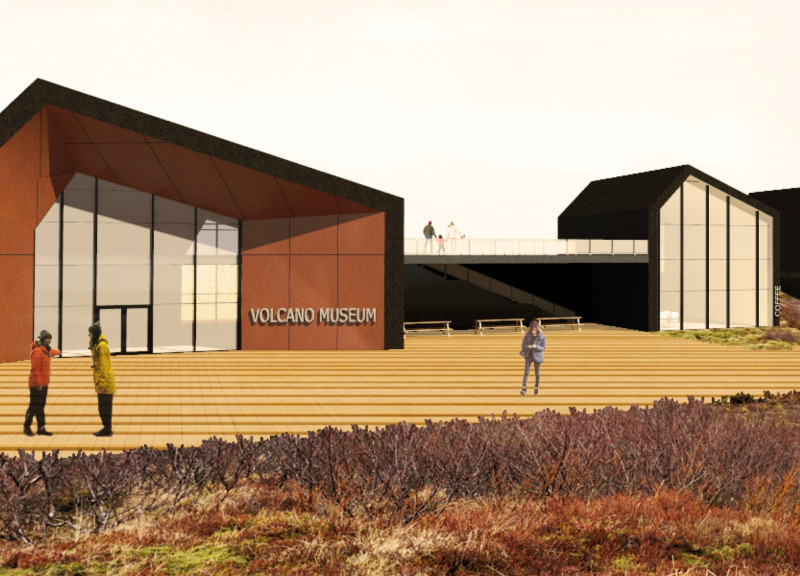5 key facts about this project
The Iceland Volcano Museum is designed to educate visitors about the geological features and volcanic activity of the region. Located in Iceland, the museum merges the historical design of traditional turf houses with the needs of modern functionality. This approach creates a space that is both inviting and informative, harmonizing with the surrounding landscape while reflecting the cultural heritage of Iceland.
Architectural Concept
The design emphasizes a thoughtful layout that enhances visitor engagement. Spaces within the museum include exhibition areas, an information center, a souvenir shop, and a café. Each area is interconnected, allowing for ease of movement throughout the building. This arrangement encourages exploration and invites social interaction among visitors, turning the museum into a lively place for learning and community connection.
Geographical Context and Adaptation
The design is responsive to Iceland's unique climate and ever-changing landscape. The roofline imitates the natural contours of the surrounding terrain. This connection to the environment makes the building feel like it belongs in its location. It acknowledges the dynamic nature of the region, providing a visual harmony that enhances the overall experience for visitors.
Material Selection
Materials are selected carefully to ensure both performance and sustainability. Plaster is used for the interiors, while XLAM panels form the main structure, offering strength and durability. Thermal and acoustic insulation are included to create a comfortable experience for all visitors, no matter the weather outside. The exterior features a composite panel system, consisting of two aluminum sheets and a mineral-filled core, which protects against harsh weather conditions.
The flooring combines grès porcelain stoneware tiles and cement screed, providing a robust surface capable of withstanding heavy foot traffic. These materials offer practicality as well as an appealing finish. Foundations are designed specifically for the geological conditions of the site, ensuring stability and safety for the structure.






















































